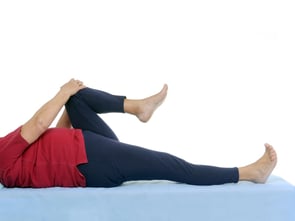 Rehabilitative therapy is essential to successfully returning to a healthy, active lifestyle after joint replacement surgery, a very important fact to keep in mind if you'll be having one of these procedures. Exercise is the chief component of that therapy, and you'll be advised to perform a number of exercises daily—especially during the early stages of recovery from hip or knee replacement—to gradually improve balance, flexibility, muscle strength and joint function. Among the most frequently prescribed are the following 6 exercises for after joint replacement surgery.
Rehabilitative therapy is essential to successfully returning to a healthy, active lifestyle after joint replacement surgery, a very important fact to keep in mind if you'll be having one of these procedures. Exercise is the chief component of that therapy, and you'll be advised to perform a number of exercises daily—especially during the early stages of recovery from hip or knee replacement—to gradually improve balance, flexibility, muscle strength and joint function. Among the most frequently prescribed are the following 6 exercises for after joint replacement surgery.
1. Ankle Pumps
Ankle pumps are recommended immediately after joint replacement surgery to aid in reducing swelling and minimizing the risk of developing blood clots—one of the most common surgical complications. You will be asked to lie flat on your back and flex both ankles, bending them up to point your toes towards your body, then down to point them away from you. You will also be asked to rotate your feet clockwise and counterclockwise while keeping your toes pointed towards the ceiling.
2. Heel Slides
Heel slides work to build strength in the hamstring muscles and improve flexibility and function in hip and knee joints. To do this exercise, you will be asked to lie flat on your back, then slide your foot and heel towards your buttocks, then back down again. You will be expected to keep your kneecap pointed towards the ceiling as you complete these motions.
3. Thigh Squeezes
Thigh squeezes strengthen the quadriceps, muscles that provide crucial support to both hip and knee joints, helping them function efficiently. You will be asked, while lying flat on your back, to tighten your thigh muscles by pushing the back of your knee downwards. You will be expected to hold that position for 5 seconds before relaxing those muscles again.
4. Leg Slides
Leg slides strengthen muscles that work to provide stability to the pelvis as you walk, which makes them essential for restoring good balance and a proper gait. This exercise involves lying in your back and sliding your legs, one at a time, out to the side and back again while keeping your knee pointed towards the ceiling.
5. Straight Leg Raises
Straight leg raises work the quadriceps and help add stability to hip and knee joints. They are done by lying on your back with your legs fully extended, tightening the thigh muscles and lifting the legs, one at a time, about 6 inches and holding that position for 10 seconds.
6. Standing Knee Raises
Standing knee raises work to increase strength and flexibility in knee and hip joints and improve balance. To do these exercises, you will hold onto a rail, walker or the back of a chair for support as you lift your knee towards your chest. You will be expected to hold that position for 2 or 3 seconds, then put your leg down again.
While these exercises and others will work to speed your recovery, reduce day-to-day pain and help ensure a good outcome after joint replacement surgery, it is essential that you work extensively with rehabilitative specialists to learn how to exercise safely. Your artificial joint will be different from your natural one was, and there will be some restrictions to observe in terms of movement and range of motion—especially right after surgery—that you will need to observe carefully as you exercise to avoid joint dislocation and other complications.





